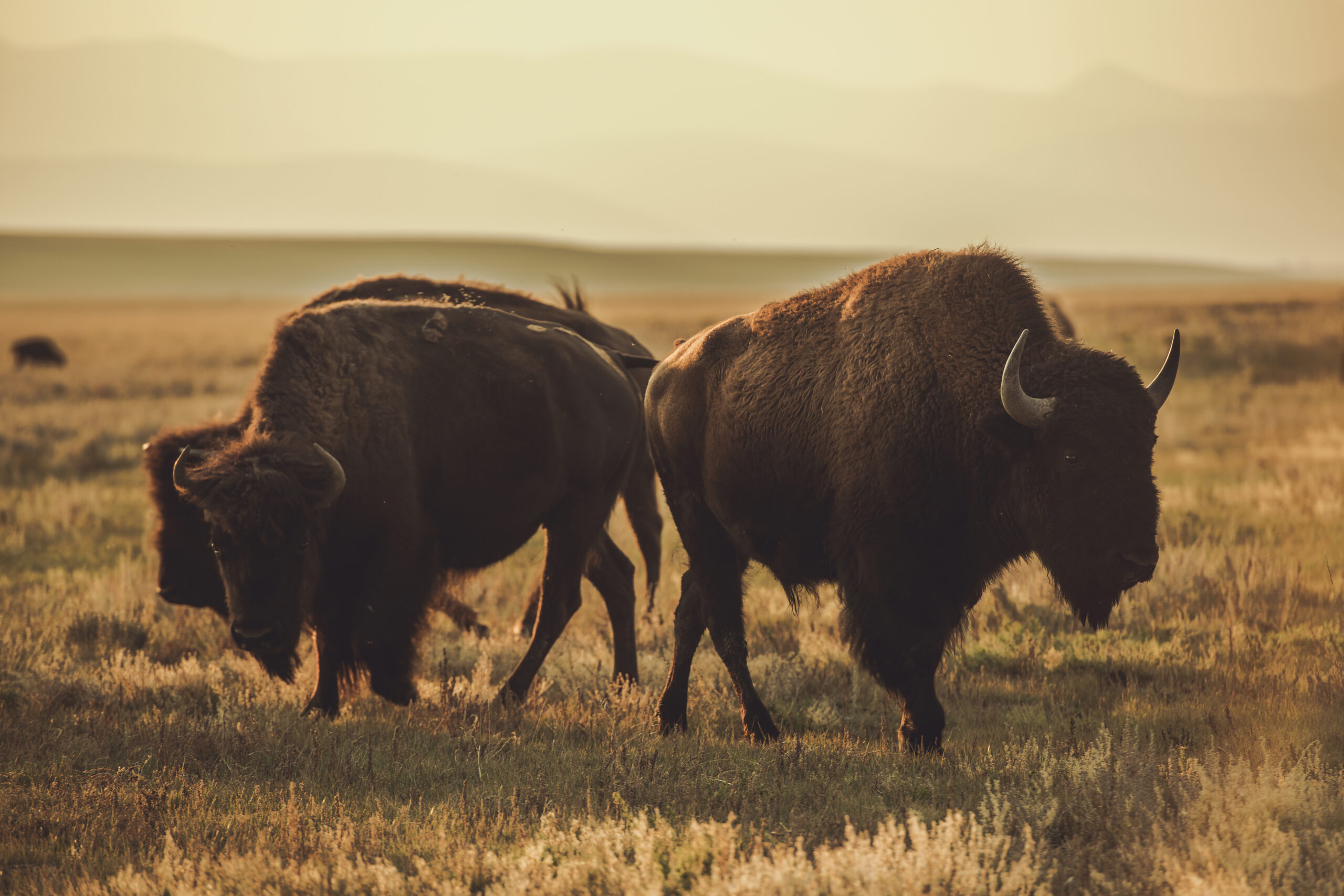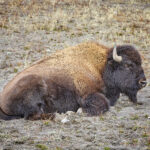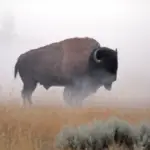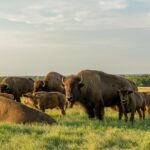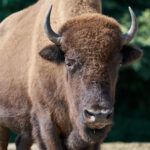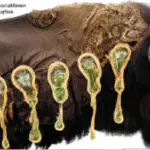Current Population of Pure Bison
Estimated number of pure bison left
The current population of pure bison is estimated to be significantly smaller than their historical numbers. While exact figures are difficult to determine, conservation efforts have helped increase their numbers to an estimated few thousand individuals.
Factors affecting the current count of pure bison
The current count of pure bison is impacted by several factors. Habitat degradation and fragmentation, competition with livestock for grazing resources, and limited genetic diversity within remaining populations pose significant challenges to their survival.
Variations in population estimates
The estimation of the pure bison population can vary due to the challenges of accurately identifying and counting individuals in remote and vast areas. Multiple organizations and researchers work tirelessly to monitor populations and refine estimation methods, contributing to a better understanding of the current numbers.
Defining Pure Bison
What is a pure bison
A pure bison refers to an individual of the species Bison bison that has no genetic influence from domestic cattle or other hybridization. Pure bison have a genetic makeup that is solely derived from the original, native bison population that once roamed the North American plains.
How to identify a pure bison
Identifying pure bison is a complex task that requires genetic testing. By analyzing DNA samples from bison herds, scientists can determine the level of domestic cattle influence in the population. Pure bison will have genetic markers that align with the original native bison population, while those with hybridization will exhibit genetic signatures of cattle.
Differences between pure bison and other bison
The key difference between pure bison and other bison lies in their genetic composition. Pure bison have a distinct genetic makeup that aligns with the native bison population, whereas other bison may exhibit traces of domestic cattle genes due to hybridization. It is crucial to preserve pure bison populations to ensure the preservation of the species in its most original form.
Historical Population of Pure Bison
Initial population of pure bison
In the past, vast herds of pure bison populated the North American plains, numbering in the millions. These herds played a significant role in the ecosystem and the lives of Indigenous peoples.
Changes in pure bison population through the years
Unfortunately, due to intense hunting, habitat loss, and diseases introduced by European settlers, the population of pure bison experienced a dramatic decline. By the late 19th century, the pure bison population was on the brink of extinction.
Factors causing decline in pure bison population
The decline in pure bison population can be attributed to several factors. The arrival of European settlers led to the loss of habitat through agricultural expansion, as well as uncontrolled hunting for their valuable hides and to diminish Indigenous populations. Additionally, diseases transmitted by domestic cattle, such as brucellosis and tuberculosis, further decimated pure bison herds.
Location of Pure Bison
Countries with pure bison
Pure bison are primarily found in North America. They can be found in both the United States and Canada, with several herds residing in protected areas across the continent.
Key habitats of pure bison
Pure bison populations are typically found in grasslands, prairies, and open plains. These habitats offer the necessary space for herds to roam and graze, ensuring their survival and overall well-being.
Impact of location on pure bison population
The location of pure bison herds plays a crucial role in determining their population dynamics. Conservation efforts in protected areas and national parks have allowed these populations to recover and thrive, while those in fragmented or unprotected habitats face greater threats and challenges.
Conservation statuses of Pure Bison
Endangered species status
Pure bison are classified as an endangered species. Their decline over the past centuries, coupled with ongoing challenges, puts their long-term survival at risk. International conservation organizations recognize their importance and advocate for their protection.
Conservation efforts worldwide
Conservation efforts for pure bison are undertaken globally to protect their remaining populations. Restoration projects, habitat conservation, reintroduction programs, and genetic management are implemented to ensure the preservation of pure bison and their role in the ecosystem.
Importance of conservation statuses
Conservation statuses, such as the endangered species designation, bring attention to the critical state of pure bison populations. These designations help prioritize conservation efforts, secure funding, and facilitate collaboration between organizations and governments.
Threats to Pure Bison Population
Natural threats
Pure bison populations face various natural threats. Severe weather events, such as wildfires and blizzards, can greatly impact their survival by diminishing their food sources and causing stress. Predation from natural predators, such as wolves and bears, can also pose a threat to these herds.
Human-induced threats
Human activities pose significant threats to pure bison populations. Habitat loss and fragmentation due to urban development and agricultural expansion limit their available range. Additionally, diseases transmitted by domestic livestock, human disturbance, and illegal hunting continue to jeopardize their survival.
Impact of threats on pure bison population
The combined impact of natural and human-induced threats has taken a toll on the pure bison population. These threats have led to a decline in numbers, loss of genetic diversity, and compromised ecological roles, further emphasizing the urgency of conservation efforts.
Role of Pure Bison in Ecosystem
Ecological importance of pure bison
Pure bison play a crucial role in the ecosystem as ecosystem engineers. Their grazing behavior helps maintain grassland habitats, promoting biodiversity and supporting various plant and animal species. They also influence nutrient cycling and seed dispersal, contributing to the overall health and balance of the ecosystem.
Consequences of pure bison decline to ecosystem
The decline of pure bison populations has far-reaching consequences for the ecosystem. Reduced grazing pressure can lead to changes in vegetation composition and structure, impacting other wildlife species dependent on the grasslands. The loss of bison also disrupts nutrient cycling patterns and affects the dynamics of the entire ecosystem.
Efforts to sustain ecosystem balance
Efforts to sustain ecosystem balance include the restoration and conservation of pure bison populations. By reintroducing and protecting pure bison herds, we can help restore ecological processes and maintain the intricate balance of the grassland ecosystem.
Genetics and Pure Bison
Role of genetics in defining pure bison
Genetics play a crucial role in defining pure bison by examining their genetic composition. By analyzing DNA samples, scientists can identify the presence of genes from domestic cattle or other hybrids, ensuring the integrity of pure bison populations.
Research on pure bison genetics
Ongoing research on pure bison genetics focuses on understanding their population structure, genetic diversity, and identifying individuals with minimal hybridization. Through genetic studies, researchers can develop management strategies that prioritize the preservation of pure bison and their unique genetic heritage.
Understanding crossbreeding impact
Understanding the impact of crossbreeding between pure bison and other species is essential for conservation efforts. Research helps assess the genetic integrity of populations and develop strategies to prevent further hybridization, preserving the purity and genetic uniqueness of pure bison.
Breeding Programs of Pure Bison
Description of breeding programs
Breeding programs for pure bison aim to increase their numbers and genetic diversity. These programs involve carefully selecting individuals with minimal hybridization and implementing controlled breeding initiatives to produce offspring that exhibit the desired genetic traits.
Success and failures of breeding programs
Breeding programs have experienced both success and failures. Successful programs have contributed to population recovery and increased genetic diversity, while unsuccessful attempts may result from various factors, such as limited funding, challenges in managing wild populations, and unexpected genetic outcomes.
Impact of breeding programs on population
Breeding programs have had a positive impact on the pure bison population by increasing their numbers and minimizing the loss of genetic diversity. These programs play a vital role in ensuring the long-term survival of pure bison and maintaining their ecological significance.
Future of Pure Bison
Predictions for population trend
While the future of pure bison remains uncertain, conservation efforts and breeding programs provide hope for their recovery. With continued dedication, it is possible to stabilize and potentially increase their population to levels closer to their historical numbers.
Plans and potential actions for conservation
Conservation plans for pure bison involve habitat preservation, reintroduction programs, genetic management, and public awareness campaigns. Continued collaboration between governments, organizations, and local communities is essential in implementing effective conservation strategies.
Challenges to conservation efforts
Conservation efforts face various challenges, including habitat loss, human-wildlife conflicts, genetic limitations, and securing funding for long-term initiatives. Overcoming these challenges requires ongoing commitment, scientific research, public support, and the recognition of the intrinsic value of preserving pure bison and the ecosystems they inhabit.
In conclusion, pure bison represent a vital part of our natural heritage, embodying the resilience and significance of North America’s iconic landscapes. Through concerted conservation efforts, we can protect and restore pure bison populations, ensuring their survival for future generations to appreciate and enjoy.

